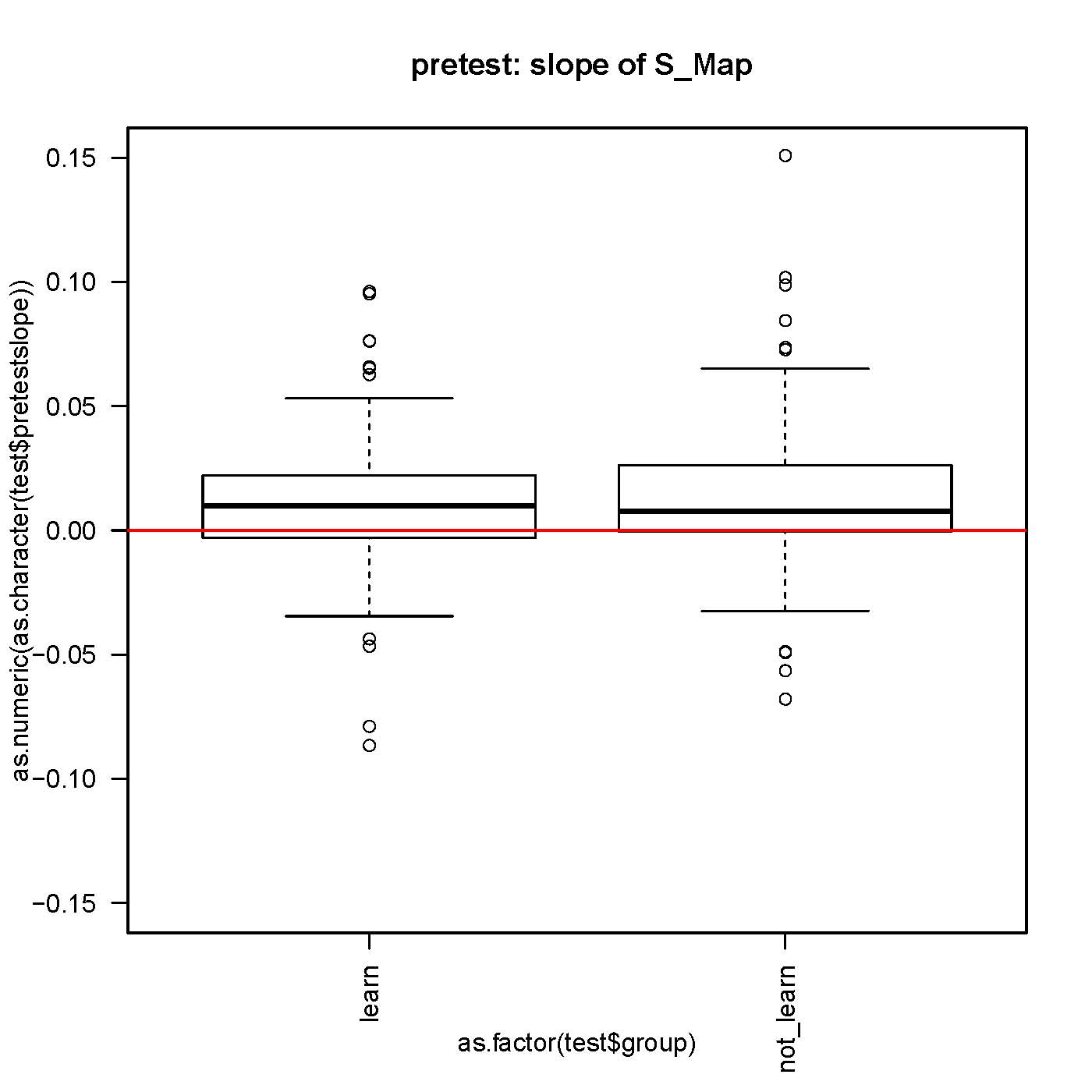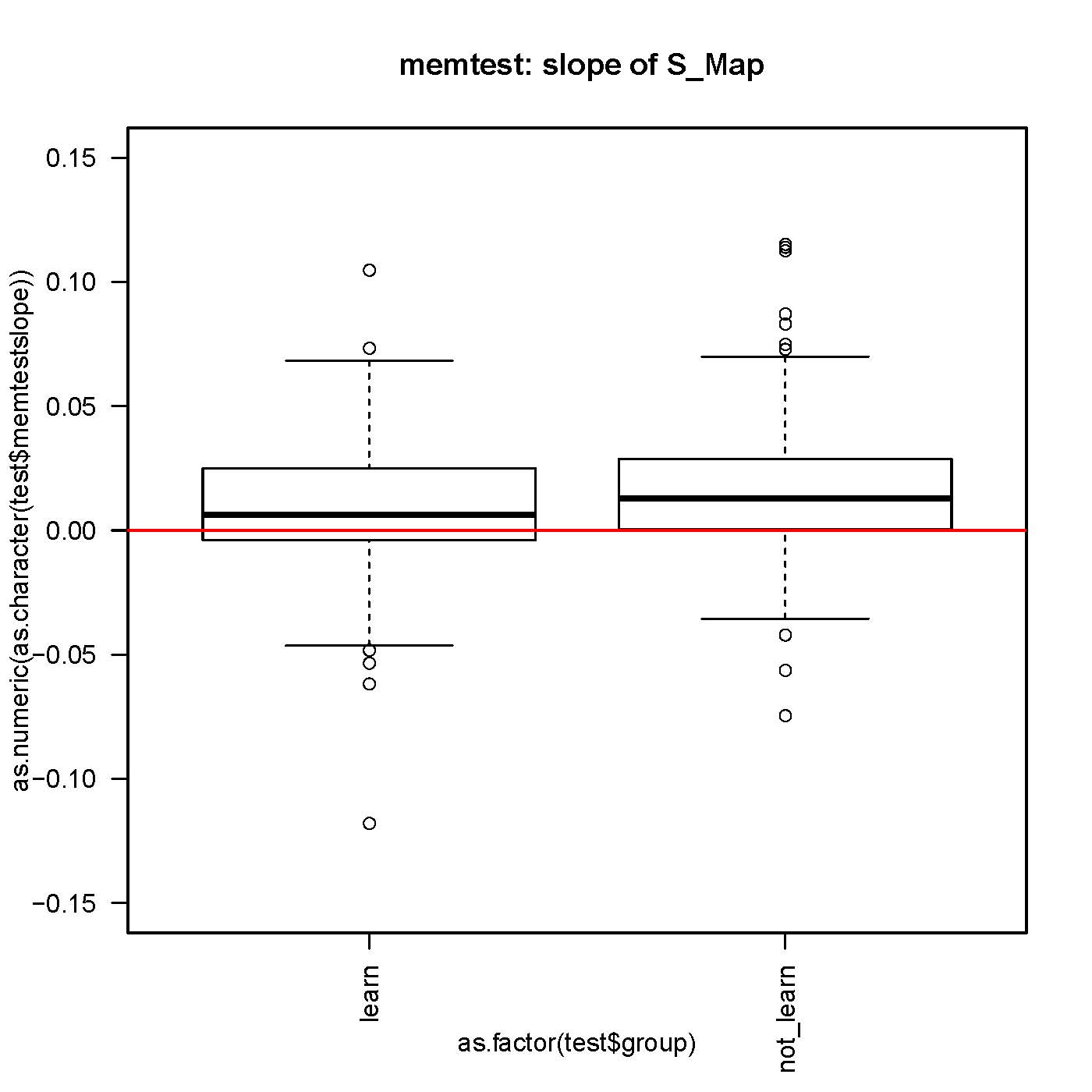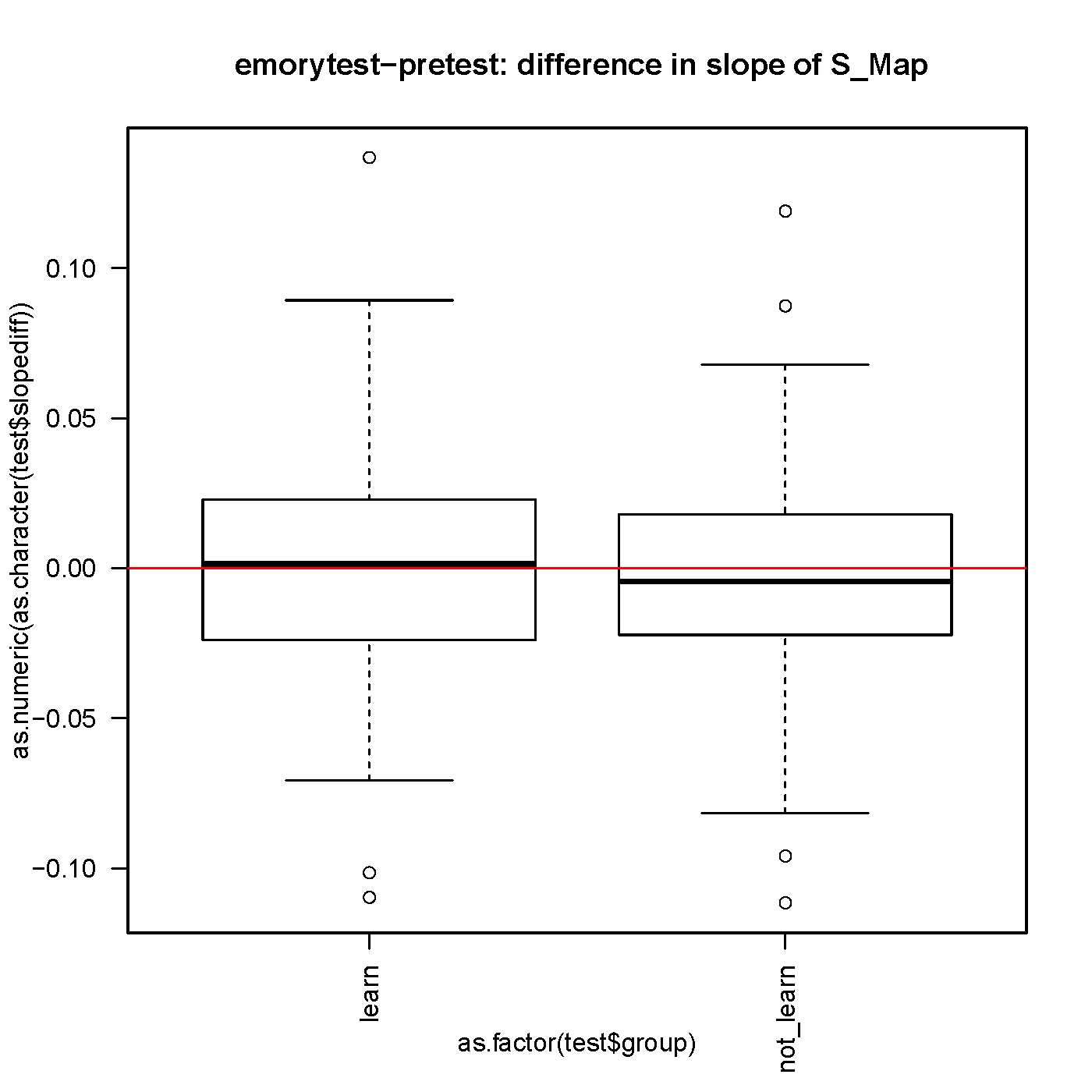SMap before and after self-learning: no difference
on Friday, October 19th, 2012 6:33 | by Julien Colomb
small but significantly different from 0 slope in the S-Map procedure, both before and after self-learning.


No difference in the slope while comparing before and after learning for each fly.

n>130 for each group.
Category: operant self-learning, Spontaneous Behavior, Uncategorized

I’m not sure I understand what you are trying to show us here. What’s on th X-axis? I though S-Map only makes sense for flights of 6 min or more?
I did test run on 30 flies and I was able to see the difference between learned and non-learned flies in the slope values. After adding more than 130, difference is gone completely. I remember you suggested long ago to shuffle and mix all the 2 min data in certain possible ways and run on it. I could try it if that could make any sense…
On the X is the two groups of flies: the one who learned, the one who did not learn (PKC inhibition). It is more than 130 flies for each group. We thought it was worth trying with 2 minutes, because the sample size was so huge.
Indeed, the slopes are much lower than the one obtained with 6min and more datasets, but significantly higher than 0.
This means than the behavior after self training is still better predicted with non-linear models, and at the same level as before training. Quite unexpected, for me at least.
Ah, now I’m starting to get it. Given that the slope is s shallow, maybe it’s too shallow to see any differences? I.e., if it were 6 min tests, there may be more room for differences?
Either way, it is indeed interesting that even after self-learning, flies do not become more linear than before.